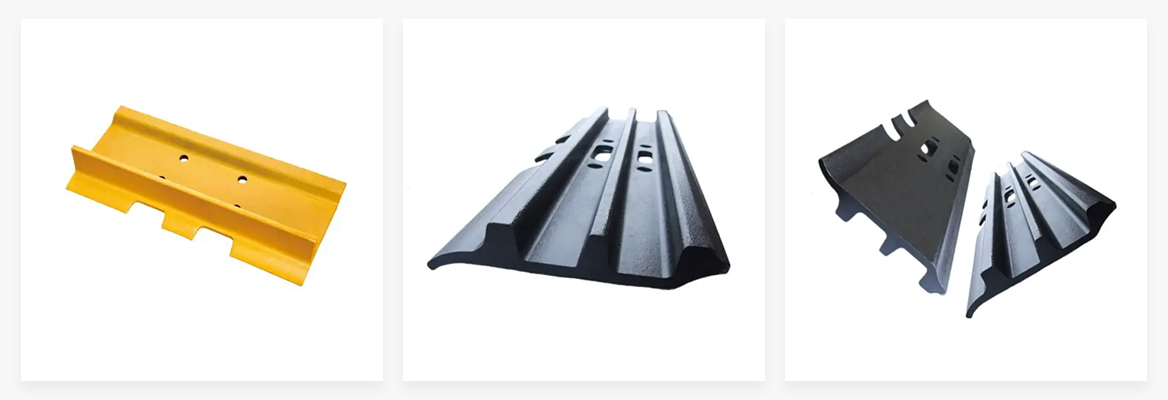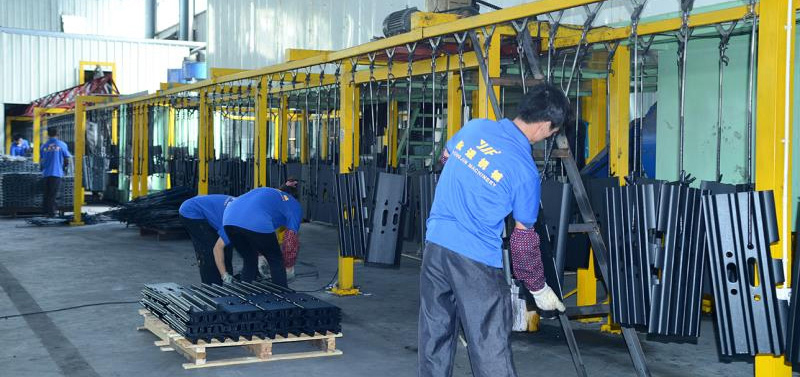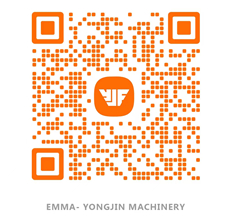In recent years, African market demand for excavator track shoes has exhibited the following characteristics and trends:
I. Core Demand Driven by Infrastructure Investment
Cluster Effects of Regional Infrastructure Projects
Key projects such as the Lagos-Kano Railway in Nigeria (West Africa), the Mombasa Port expansion in Kenya (East Africa), and energy infrastructure upgrades in South Africa require intensive operations of 300-ton+ excavator fleets. Track shoes, as high-wear components in demanding environments, exhibit replacement frequencies directly correlated with construction intensity.
Continuous Growth in Equipment Inventory
China’s exports of construction machinery to Africa reached ¥17.9 billion in 2024, a 50% year-on-year increase, with key markets like South Africa and Algeria achieving a 34% CAGR in equipment imports. This expanding equipment base directly drives aftermarket demand for track shoes and other components.
II. Specialized Demand from Mining Scenarios
Accelerated Wear Under Extreme Conditions
In open-pit mining operations in the Democratic Republic of Congo’s copper-cobalt belt, daily equipment operation exceeds 16 hours, shortening track shoe metal fatigue cycles by 40% compared to standard projects. Guinea’s bauxite mining sector saw a 15% annual increase in foreign-owned equipment procurement, reflecting rigid demand for components in high-wear environments.
Technical Adaptability Upgrades
Deep-pit diamond mining in Botswana requires track shoes with enhanced wear resistance and impact resistance. Surging orders for hydraulic excavators in 2024 further boosted demand for high-end alloy track shoes.
III. Market Characteristics and Service Model Evolution
Regional Demand Differentiation
West African infrastructure projects favor standardized bulk purchasing of components, while East African port construction prefers long-term maintenance agreements with equipment leasing firms. In South Africa, where equipment renewal cycles are longer (5-7 years), refurbished track shoes account for 35% of the secondhand market.
After-Sales Service Competition
African consumers increasingly prioritize post-sales responsiveness, with 65% citing spare parts network coverage as a key brand selection factor in 2024. Leading manufacturers have reduced parts delivery cycles to 72 hours through regional warehousing hubs.
IV. Supply-Demand Dynamics and Competitive Landscape
Chinese construction machinery brands now operate over 100,000 units in Africa, with companies like Sany and XCMG establishing localized production bases in key countries, achieving 60% localized track shoe production. However, secondhand European and American equipment still holds 30% market share, competing through customized track shoe retrofitting services.
Conclusion
The African track shoe market is experiencing rapid growth, with total market size projected to exceed ¥1.4 billion in 2025 and a 25%-30% CAGR over the next three years. Demand is characterized by dual drivers (infrastructure and mining), coexistence of new and refurbished equipment markets, and intensified competition in service capabilities.
For track shoe inquiries, please contact us via the details below
Helly Fu
E-mail: [email protected]
Phone: +86 18750669913
Wechat / Whatsapp: +86 18750669913
Post time: May-27-2025










